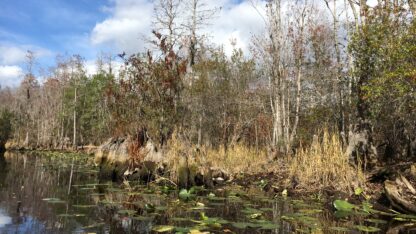'Our homelands are important': Muscogee Nation works to deepen involvement with Okefenokee Swamp
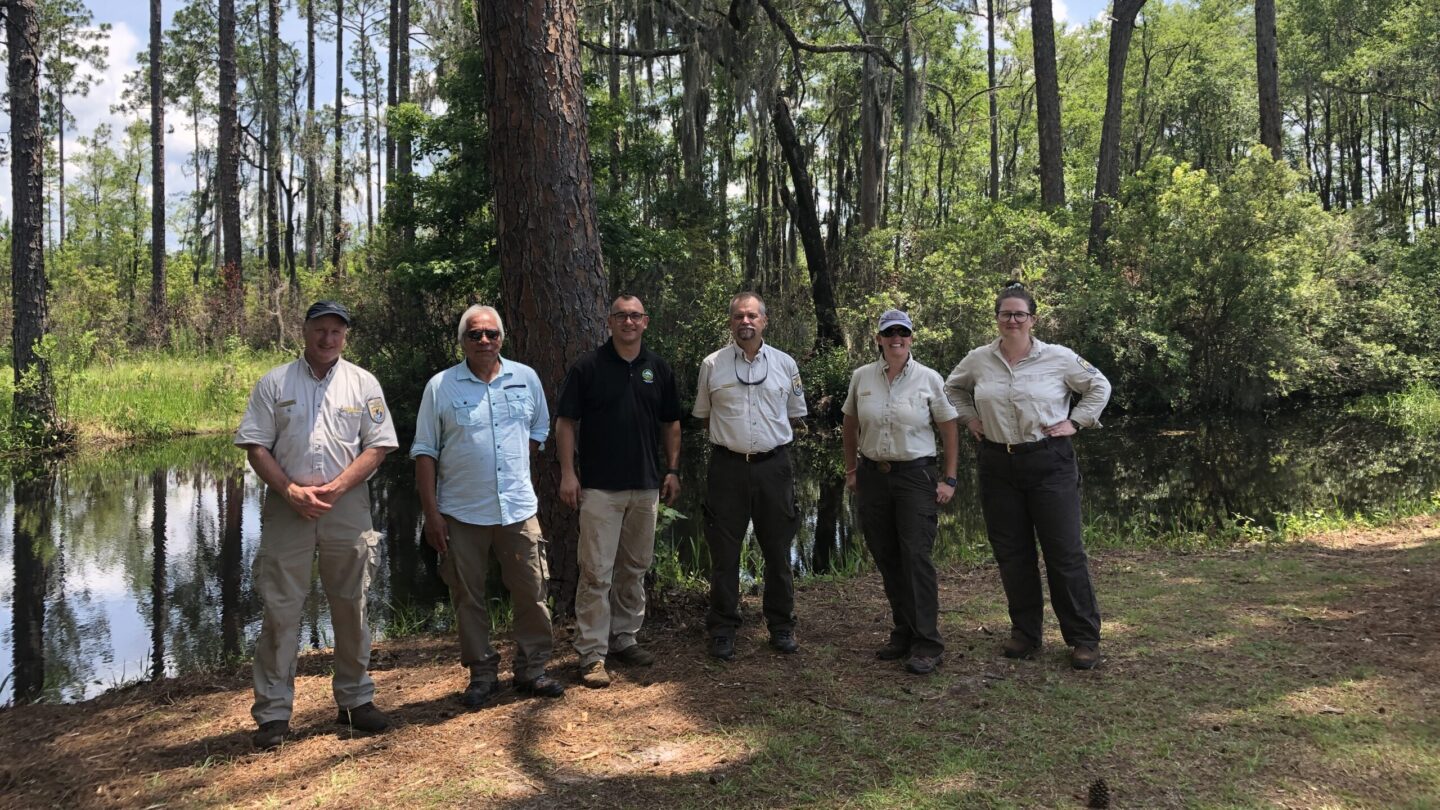
A little over an hour into his first visit to the Okefenokee, after a boat ride through cypress trees draped with Spanish moss and a turn through a carpet of white swamp lilies floating on the dark water, all under the gaze of alligators along the edges, Turner Hunt said he was already impressed by the swamp.
“It’s a beautiful place,” he said. “It’s good to get here and get to experience this, see the plants, see the animals.”
Hunt, the preservation manager for the Muscogee (Creek) Nation, was on a tour with officials from the U.S. Fish and Wildlife Service.
The swamp, described as “a most blissful spot” to the Creek people by an American botanist traveling in the late 1700s, was part of the Muscogee homelands before they were forced out of Georgia to Oklahoma.
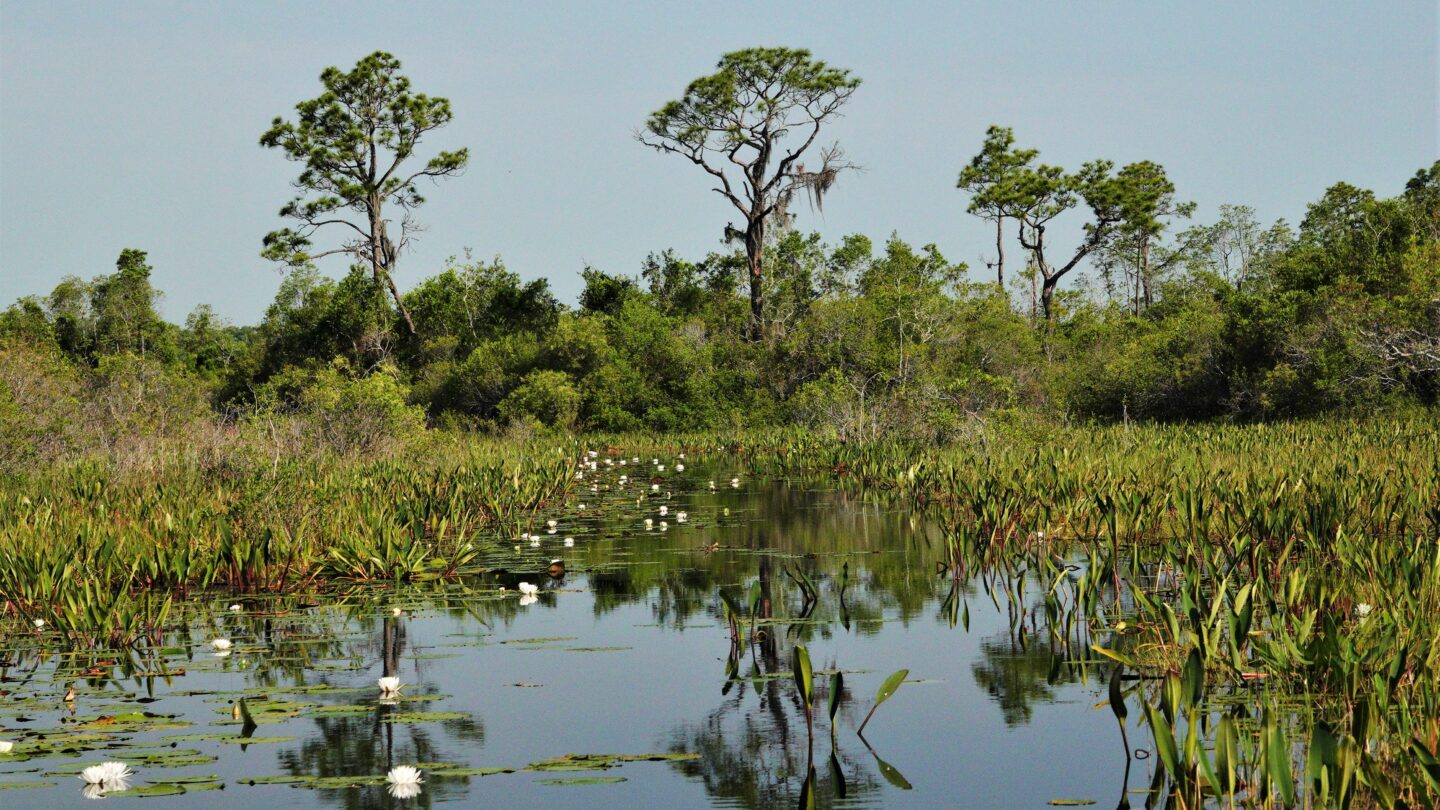
Now the tribal nation is moving to be more involved when the federal government makes management decisions that affect the Okefenokee, as fights continue over a controversial mine proposed near the swamp.
“We know that this place was important to our ancestors,” Hunt, who’s a citizen of the Muscogee Nation, said. He said the treaty when they signed it over — the 1814 Treaty of Fort Jackson — was coerced.
“We weren’t necessarily looking to give up this land.”
Hunt’s traveling companion on the visit was Emman Spain, the NAGPRA coordinator for the Muscogee (Creek) Nation, and a full-blood member of the Seminole Nation. He, too, had never been to the Okefenokee before, though Seminole people also have historic ties to the swamp.
“I’ve always read about and learned about it,” Spain said. “I was excited to come out here this time.”
Most of the Okefenokee now makes up the largest national wildlife refuge east of the Mississippi River. The entire swamp, about 700 square miles, is the biggest intact blackwater swamp on the continent.
There was a failed attempt to drain it in the late-1800s to turn it into farmland. The canal left from that effort is now a popular way into the wildlife refuge for visitors planning a day of fishing, birding or setting out for a multi-day paddle and camping trip.
“We do care. We want to make sure that our ancestors are protected.”
Turner Hunt, preservation manager for the Muscogee (Creek) Nation
In the 1990s, another threat emerged: a proposal to put a strip mine by the swamp. It was eventually stopped by the federal government.
A more recent plan, to build a titanium mine just outside the refuge, has again drawn resistance.
The mine, proposed by a company called Twin Pines LLC, would be located on the same ridge that serves as a natural dam along the swamp that the failed drainage canal was aimed for.
The president of Twin Pines has said that according to their engineering studies, the mine would not hurt the swamp. Critics of the plan aren’t buying it.
Hunt said when the Muscogee Nation learned about the mine, they were concerned about the impact it could have. They reached out to the U.S. Army Corps of Engineers to make sure they’d have a chance to weigh in.
Under the Trump Administration, and with a shifting regulatory regime, that chance didn’t happen.
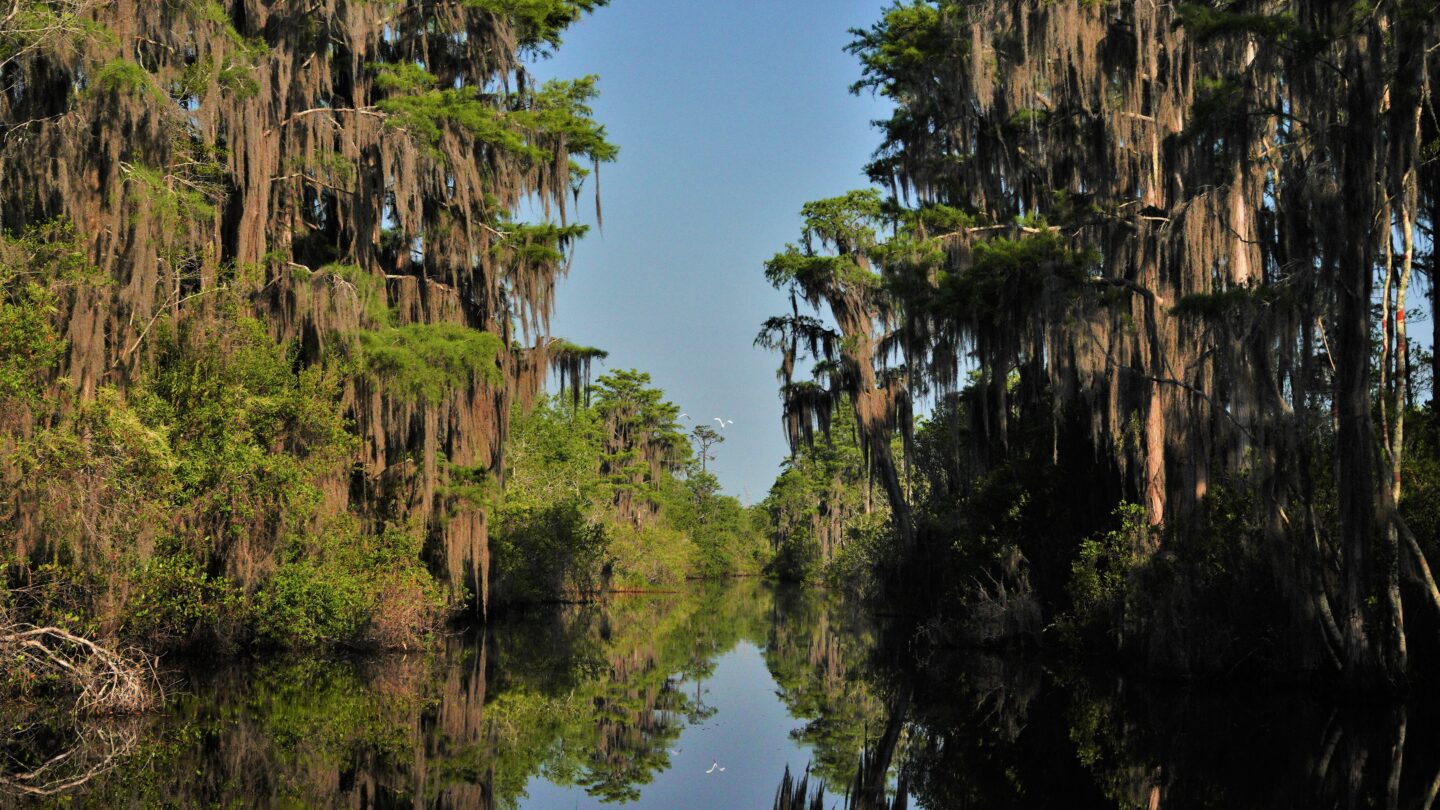
Last month, the federal government reversed a decision it had made during the Trump Administration, making the path forward for Twin Pines more difficult and much more expensive.
It was based on the government’s failure to consult with the Muscogee Nation, which had requested a full environmental review of the proposal.
Twin Pines is suing over that reversal.
And the tribal nation is working to designate parts of the Okefenokee as traditional cultural property, meaning the swamp has special significance to them, and giving them a seat at the table when the U.S. Fish and Wildlife Service makes decisions about how to manage it.
“Our homelands are important. A lot of people don’t, you know — especially in Georgia, Alabama — they don’t think that we care about our homelands anymore,” Hunt said.
“We do care. We want to make sure that our ancestors are protected.”
In fact, the visit to the Okefenokee happened because Hunt and Spain had a trip to Georgia planned already. Spain’s job is to repatriate and rebury the remains of Muscogee ancestors whose graves had been dug up. They’d actually come to Georgia primarily for two reburials — and added this trip to the Okefenokee.
The officials showing Hunt and Spain around offered to bring them to see a mound in the woods on the island they’re visiting.
After bushwhacking through pine woods, they found it — a small rise in the land with trees growing on top. Hunt said people built mounds for different reasons over time.
“We see these as our mark on our ancestral homelands,” Hunt said. “Every time there’s a destruction or something to them, it’s basically causing cultural erasure.”
This mound, on federal land, is protected, but many have been damaged or demolished.
Floyd’s Island has other people’s history on it, too.
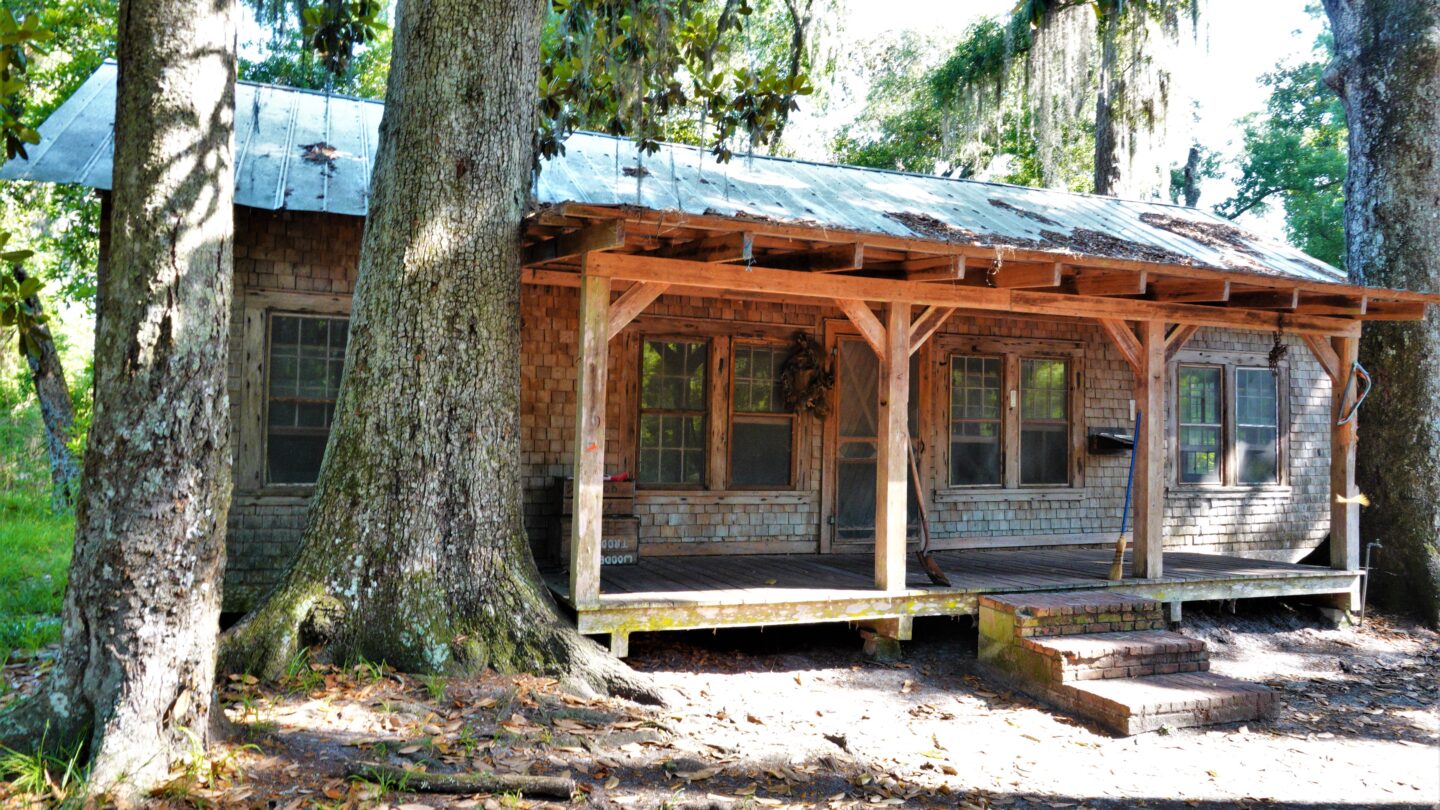
“The swamp itself is a connection,” archeologist Rick Kanaski, the Southeast Regional Historic Preservation Officer for the Fish and Wildlife Service, said. “It’s been an important place to whoever who has lived here and around it. And it served different roles.”
There was a Seminole camp on the island during one of the Seminole Wars of the 1830s.
And there’s a cabin on the island, now listed on the National Register of Historic Places, that was built by a logging company and was later used by people who were working to protect the swamp.
Kanaski said with the traditional cultural property, the Muscogee Nation can tell his agency areas that are important to them, so that the government doesn’t inadvertently damage them.
“We talk about ‘pre-history.’ It’s not pre-history, its history. It’s their history,” Kanaski said. “Those are critical stories for us to try and — not so much understand — but at least acknowledge.”
Hunt said he hasn’t always heard that from the U.S. government.
“It’s good to hear federal agency representatives say those types of things,” he told Kanaski.
Hunt said the Muscogee Nation doesn’t want to interfere with current management. But they do want to be involved and have their history here acknowledged, to create opportunities for Muscogee citizens to come back and visit and to help protect the swamp.
Officials with the refuge said they welcome that, and they’re open to hearing from other tribes with connections here, too.

